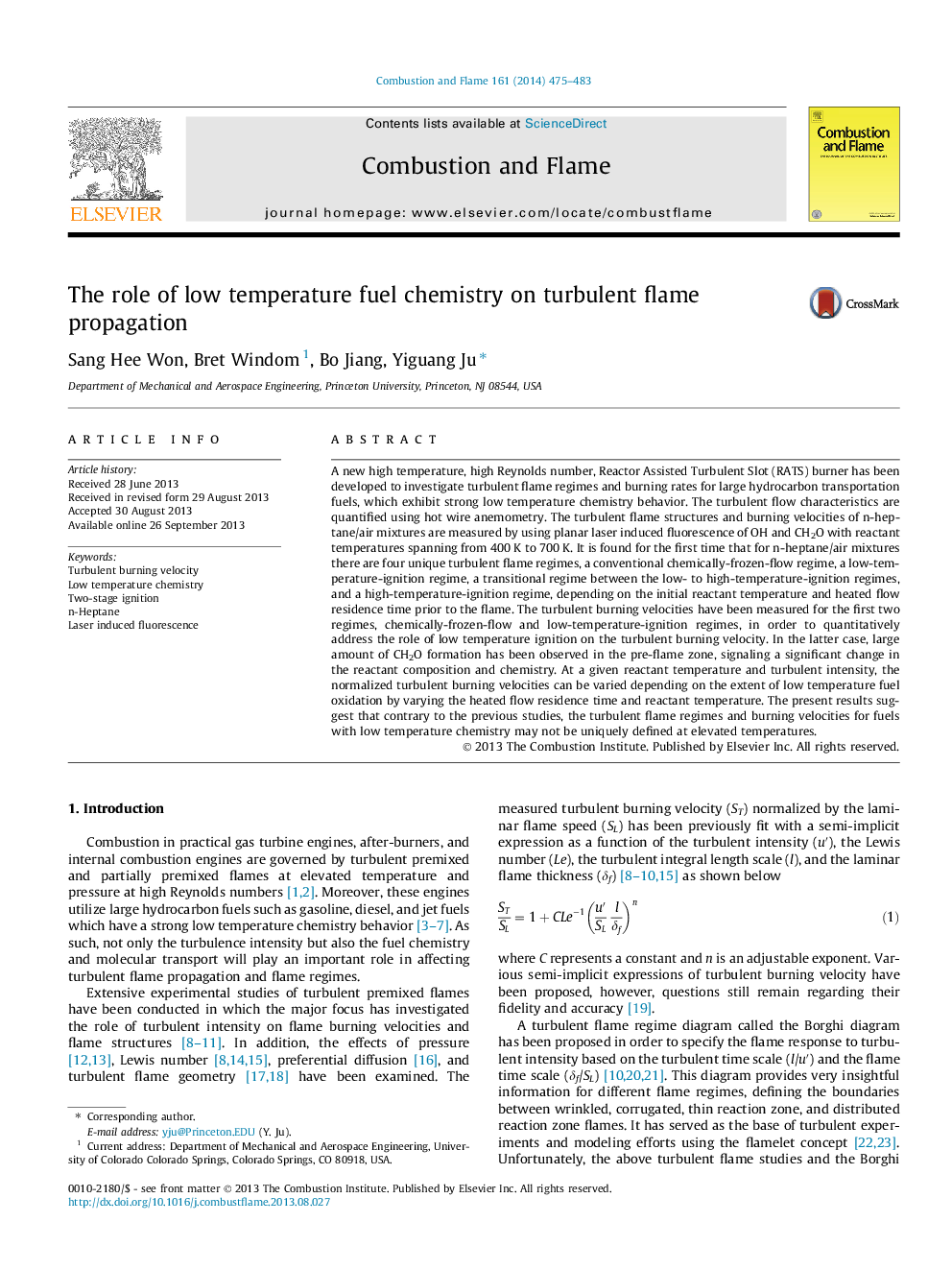| کد مقاله | کد نشریه | سال انتشار | مقاله انگلیسی | نسخه تمام متن |
|---|---|---|---|---|
| 169016 | 457972 | 2014 | 9 صفحه PDF | دانلود رایگان |
A new high temperature, high Reynolds number, Reactor Assisted Turbulent Slot (RATS) burner has been developed to investigate turbulent flame regimes and burning rates for large hydrocarbon transportation fuels, which exhibit strong low temperature chemistry behavior. The turbulent flow characteristics are quantified using hot wire anemometry. The turbulent flame structures and burning velocities of n-heptane/air mixtures are measured by using planar laser induced fluorescence of OH and CH2O with reactant temperatures spanning from 400 K to 700 K. It is found for the first time that for n-heptane/air mixtures there are four unique turbulent flame regimes, a conventional chemically-frozen-flow regime, a low-temperature-ignition regime, a transitional regime between the low- to high-temperature-ignition regimes, and a high-temperature-ignition regime, depending on the initial reactant temperature and heated flow residence time prior to the flame. The turbulent burning velocities have been measured for the first two regimes, chemically-frozen-flow and low-temperature-ignition regimes, in order to quantitatively address the role of low temperature ignition on the turbulent burning velocity. In the latter case, large amount of CH2O formation has been observed in the pre-flame zone, signaling a significant change in the reactant composition and chemistry. At a given reactant temperature and turbulent intensity, the normalized turbulent burning velocities can be varied depending on the extent of low temperature fuel oxidation by varying the heated flow residence time and reactant temperature. The present results suggest that contrary to the previous studies, the turbulent flame regimes and burning velocities for fuels with low temperature chemistry may not be uniquely defined at elevated temperatures.
Journal: Combustion and Flame - Volume 161, Issue 2, February 2014, Pages 475–483
